
Travelling with purpose
By Patrick Regnault
Travelling broadens the mind, education brings clarity, and curiosity is the energy that draws it together. Visiting gardens and meeting with the people who care for them is an exciting way to learn and share. It allows a connection that frees people to discover each other’s experiences and knowledge. Learning from books, classes, or podcasts is good but not quite the same as a direct personal connection with the person on the ground in context.
I will share my experience from a trip I took a year ago to visit the largest Oriental Garden in Europe. Japanese professors have described it as the best Edo Period Garden outside of Japan. I spent five hours with the director walking through the beautiful grounds, talking about traditional Japanese pruning, pest management, design and maintenance, and sharing the feelings experienced from the different areas of the gardens.
The Oriental Garden of Maulevrier
Its full name is Parc Oriental de Maulevrier. It is situated near Cholet, South of Anger and the Loire River. The park has a long history. I will skip the first 200 years and jump to the creation of the Japanese garden itself. The oriental garden was created by Alexandre Marcel between 1899 and 1912 for the textile industrialist Eugène Bergère.
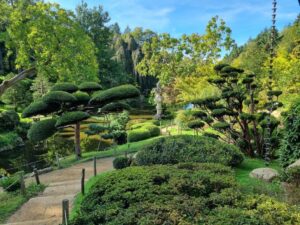
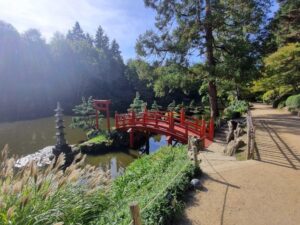
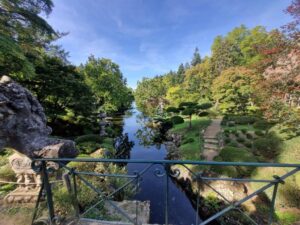
Marcel, who became the son-in-law, was a well-established architect with a fascination for Far Eastern architecture. Some of the elements found in the garden come from the pavilions he designed for the Paris Universal Exhibition of 1900. He co-designed the oriental garden with the head gardener, Alphonse Duveau. Because of the intricate symbolic nature of the garden, it is possible a Japanese master may have been involved.
In 1945, after the sale of the property, the grounds fell into disrepair and were then abandoned altogether. In the early 1980s, the town bought the park, and volunteers started cleaning and rediscovering the lost marvel. The park opened its doors to the public in 1985, and it was only after the visit of three professors from Tokyo and Niigata’s horticultural universities that it was recognised as an Edo Period (16th to 19th century) garden.
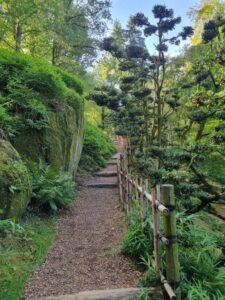
The Edo-style gardens are walking and transformation gardens. Water must comprise one-third of the grounds and flow from East to West. It must have a circular path, hills, and islands, and be enjoyed from various viewing windows. All these features are present in Maulevrier. The other aspect of the style is the walk through the transformation of human life. The seasons and the planting take us from birth to death and the different stages of wisdom accumulation. In spring, the new leaves of the deciduous plants, including the beautiful Fagus sylvatica ‘Tricolour’, and the blooming of Cherry trees, camellias and azaleas represent the birthing and first years of life. In summer, the full flush of the vegetation and the flowering of various plants such as hydrangeas and philadelphus evoke life’s mature and life-giving time. Autumn is that time of life when maturity and acquired wisdom can be expressed and shared; this is shown by the stunning autumn display of leaves from acers, larch, and nandinas, and the display of native cyclamen on the ground. As the leaves fall and the plants go dormant, we enter the last years of life, the time to shed and let go of all we no longer need. Winter is the time for the evergreen, which reminds us of the immortality of our essence and the potential of rebirth.
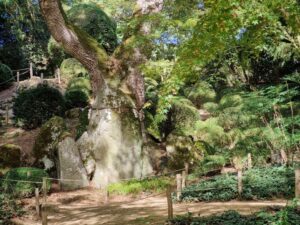

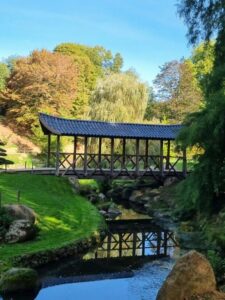
Water flows in streams and is tranquil in ponds. Its power is as much in its body as in its reflection. Through that reflection, we can admire the more subtle aspect of the garden and symbolically represent the nature of reality.
The two islands, the turtle and the crane, represent the Yin and Yang, the feminine and the masculine, the balance of reflection and action. Rocks have an important place; they bring the mineral’s anchoring quality. In one part of the garden, the rock formation has a particular feel that is felt by many, and the Shimenawa (Shinto straw rope) was placed to indicate the presence of a Kami.
Patrick Regnault FAIH RH0062
Interactive Landscapes
E: patrickregnault@hotmail.com
All images supplied by Patrick Regnault
